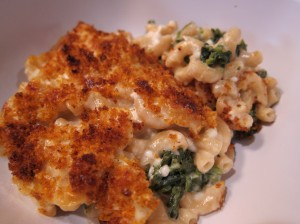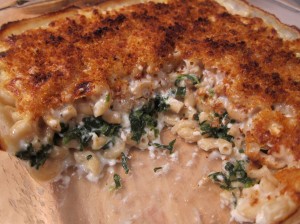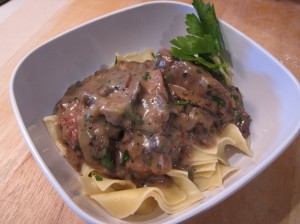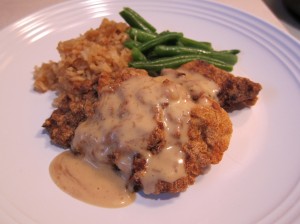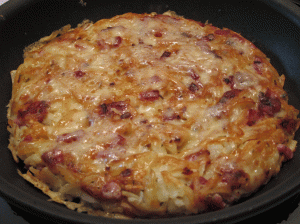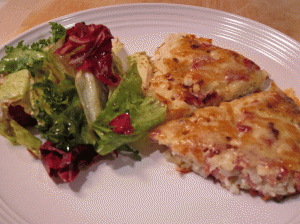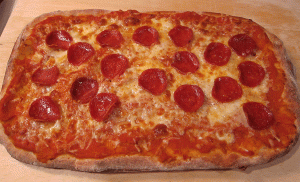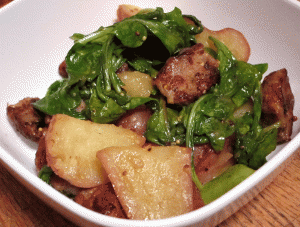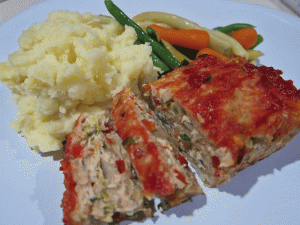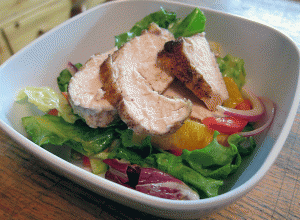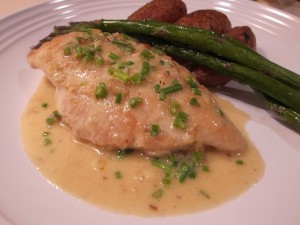For four weeks I cooked at least three nights a week, using recipes from EatingWell’s cookbooks. There were several reasons for this challenge, the most important being that I wanted to:
- Eat consciously and locally. With full-time jobs, kids, and other obligations, too often we rely on convenience foods and take-out, not paying attention to where the food came from.
- Eat healthfully. By preparing meals myself, I could control what ingredients went into the foods we ate.
- Cook regularly at home, for pleasure. By challenging myself to cook at home, it had to be made interesting, fun, and satisfying, rather than a chore.
- Cook from recipes in cookbooks I own. I own bookshelves full of cookbooks but usually wing it, or find recipes on the internet at the last minute.
I certainly achieved these goals, but some of the lessons I learned enlightened me about the further benefits of cooking at home:
Let your meals plan your cravings, not the other way around.
In order to stick to my plan, I had to make a list and go to the market on Sunday to purchase ingredients for the week. The only thing I did not purchase in advance were meats that needed to be cooked later in the week, as I didn’t them to spoil. The upside to this is that I had all my ingredients and recipes ahead of time. Before I would let our cravings guide our meals, and be running around shopping and getting food on the table late, if I cooked at all. My meals were now guiding my cravings. I looked forward to dinner, knowing what was on the menu.
Your pantry is personal and will build itself.
We’ve all seen those articles in newspapers and magazines, or chapters in cookbooks, that list “what every pantry should have.” They are written to make our lives easier by giving us the basic ingredients for meals. But what if you don’t like some of those ingredients or don’t eat them often? By challenging myself, I selected recipes I knew we would like, and by Week Two of the challenge, my shopping list was cut in half, simply because our tastes were reflected in my pantry by what I had purchased for our weekly meals. I also took this as an opportunity to discard or give away some one-time use ingredients that I knew I wouldn’t use, but had hung on to like fine heirlooms, providing me with more shelf space for necessary ingredients.
It doesn’t cost as much as you think.
Once our pantry began to build, the shopping costs decreased dramatically. Our main purchases became vegetables and proteins. Had I shopped using coupons and supermarket circulars, I would have saved more, but I was not planning with budget in mind, and I was buying premium ingredients; particularly local or sustainably raised meat, which can be expensive, but supporting our local farms is important to me. I’m sure even this cost will decrease as I find in-season deals for produce and meat that can be frozen for the winter months, and “shop” in my own freezer for ingredients I already have on hand.
Cooking can become a part of the routine.
I cannot begin to tell you how tired I am when I get home. Just about everyone I know feels the same way. By planning ahead, I was able to choose easy meals, have all the ingredients on hand, and have a cooking plan. I was mentally prepared not to sit on the couch when I got home. As with the weeknight chicken from January, my plan might involve turning on the oven to pre-heat, or begin a marinade before I changed my clothes. Many recipes don’t need much attention. If I was really on my game, I’d chop my vegetables on Sunday when I brought them home from the market, but let’s not get carried away.
Feel better instantly.
The best advantage to cooking at home is this: You will feel better instantly. I don’t think we realize how much our eating habits change us, until we change them. I enjoyed feeding my family more often. I felt proud that I was accomplishing a goal. My skin was clearer and I was walking taller. Do I still want chocolate chip cookies? Of course! But I am more likely to make them myself and share them than to purchase ones that have a biblical shelf life.
Don’t limit yourself.
There was really only one downside to my challenge, which was cooking from the same series of books. Although the EatingWell series casts a wide culinary net, when recipes come from the same place they tend to have a common theme, whether it is the ingredients, textures, or flavors. I must admit I gained a little more respect for people who tackle making every recipe from the Joy of Cooking or The Art of French Cooking. While the lessons from this practice were invaluable, I’ll be cooking from several different sources from now on.
It saddens and perplexes me that Americans, and apparently people over the better part of the planet, have gotten away from home cooking and real food. I’m glad there are people like Jamie Oliver and Mark Bittman championing the cause, but real change can only be made by doing the work yourself. I know I’ll be happily cooking at home more often. I’ll never give up restaurants or take-out, but they should be a treat, not the larger part of our diets. My family may not be 100% there yet, but we’re working on it.
Click here for the original challenge and a list of recipes.
